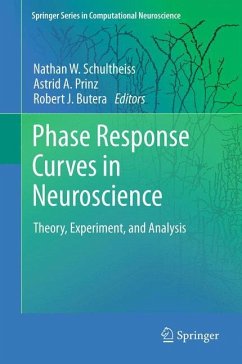This book will track advances in the application of phase response (PR) analysis to the study of electrically excitable cells, focusing on applications of PR analysis in the computational neurosciences. This proposal was motivated by discussions with colleagues at the 2007 meeting of the Organization for Computational Neuroscience (OCNS) and further motivated by the success of a workshop at the 2008 OCNS meeting this past July. At that meeting the editors hosted a workshop entitled A dialogue for theoreticians and experimentalists: What is phase response analysis, and what can it tell us about neurons and networks? Invited speakers used mathematical, modeling, and experimental results to illustrate how phase response analysis has been used to reveal or describe neuronal and neuronal population dynamics. This was the most well-attended workshop of the meeting and was standing room only.
Hinweis: Dieser Artikel kann nur an eine deutsche Lieferadresse ausgeliefert werden.
Hinweis: Dieser Artikel kann nur an eine deutsche Lieferadresse ausgeliefert werden.
From the book reviews:
"This is a very good work on phase response neural modeling involving both single neuron and population neurons networks. Good descriptions of the cortical, subcortical, and brain stem networks is spendidly done and I highly recommend this book for both beginning and advanced physiologists. PRCs and the fourth dimensional models are well described. Students, fellows, and senior investigators will find it illuminating." (Joseph J. Grenier, Amazon.com, September, 2014)
"This is a very good work on phase response neural modeling involving both single neuron and population neurons networks. Good descriptions of the cortical, subcortical, and brain stem networks is spendidly done and I highly recommend this book for both beginning and advanced physiologists. PRCs and the fourth dimensional models are well described. Students, fellows, and senior investigators will find it illuminating." (Joseph J. Grenier, Amazon.com, September, 2014)








